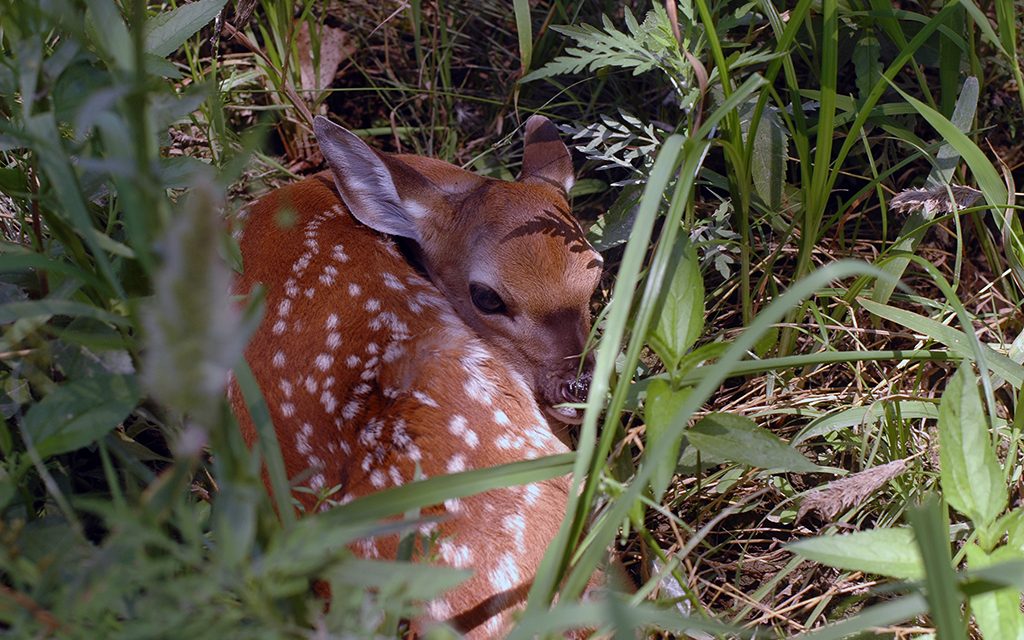by John Jefferson
Well, it’s started. A post on a neighborhood chat site read: “Baby fawn in our backyard – how do we take care of it?”
Earlier this spring, I decided against writing another “Don’t mess with the fawns” article. The number I’ve previously penned could almost be measured by the song, “How Deep Is the Ocean?”
I started to add a nasty comment to the lady’s post but knew that wouldn’t be acceptable. And, besides, 31 people had already commented.
Most offered intelligent advice about leaving the fawns alone since their mother would soon be back. They’re not abandoned! Enough people commenting, though, were wringing their hands over a solution for the ”neglected” fawn, so I realized too many still don’t understand. To get their attention, one person wrote, “If you touch it, you’ll go blind.”
I won’t take it that far, but some may need a jolt. One seemingly intelligent friend called one afternoon wanting to know what to do about twin fawns she saw on a bluff overlooking a heavily trafficked road between Austin and Lake Travis. It was above an S-curve near the bottom of a long, steep hill. Speeds coming down the hill approached sonic boom level.
Although not the answer she wanted, I told her how dangerous it would be for HER to park there and try to shoo the fawns to safety. I also told her how overpopulated Texas was with deer, that deer-vehicle collisions were inevitable, and posed little threat to survival of the species.
According to latest estimates, Texas has over five million white-tailed deer. Over half are does that will deliver fawns – twins in many cases.
A high fawn crop is expected this year. As human populations increase and move into new subdivisions, more fawns will be encountered by residents unfamiliar with how deer live and prosper.
When fawns are born, they have no scent. This somewhat insulates them from coyotes, bobcats, mountain lions, and domestic dogs. Their doe-mothers usually hide them in high weeds and leave them there for periods of time while they – the does – venture off to browse for well-needed nourishment to enable feeding their hungry and soon-demanding babies. Does also might need a little rest, themselves. Many human mothers will understand. It’s instinctive.
Doe deer are better mothers than some give them credit for being. Fawns left alone are not “abandoned” — except in rare cases — any more than a human child is when its mother is in the kitchen or taking a short nap. The deer-mothers – like human mothers – remember where they left their babies. If this weren’t so, our deer populations wouldn’t increase every year.
Humans just aren’t equipped to care for fawns. A former TPWD Big Game chief recently told of a woman who wrapped a fawn in a towel and brought it inside – into AIR-CONDITIONING! And then fed it cold cow’s milk … which rapidly ran through the newborn. Then, she called TPWD for help. Lesson learned.
We’re not told whether she “went blind”.
JJ





